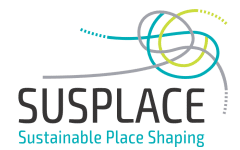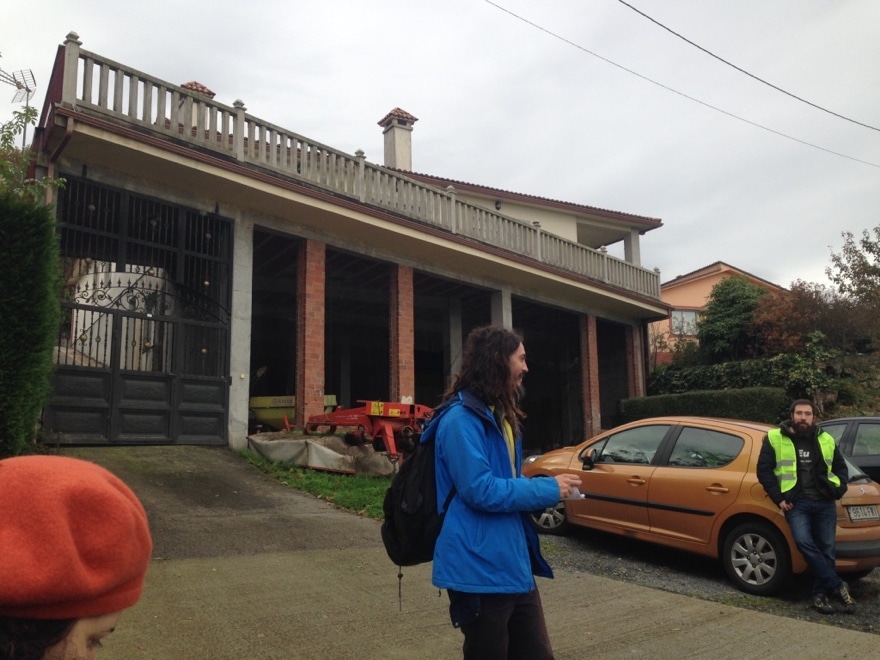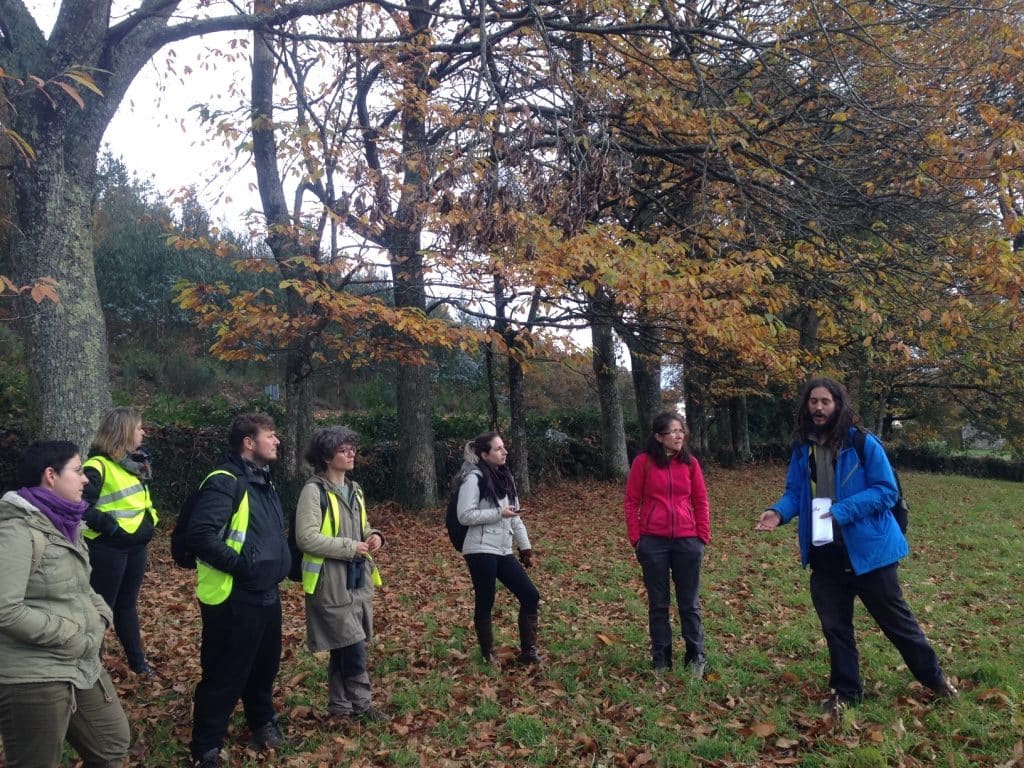
On the 26th of November I attended a collective hike in Galicia (North West Spain). Organized by the Commons Study Program they invited members of Ergosfera, an association of architects, who guided us in an amazing trip throughout the rural space of Galicia under the lenses of: Commons, Feminism and Rurality. The Commons Study Program is a network of different organizations (academic and non-academic) that jointly create spaces for critical thinking and action around Commons in Galicia. They work with several types of commons in Galicia- both traditional commonlands and other commons spaces, such as the “Colourful House”-, as well as with the network Montenoso, an association that works on supporting and disseminating the role of Galician commonlands in society.
From all the interesting insights and discussions we had during the hike, I would highlight three ideas that really made me think on rural areas in Galicia and in the world:
- Rural spaces are more than marginalized places, with less opportunities and depopulation rates. Many rural spaces in Galicia can be seen as spaces where the forces of capitalism do not act with the same strength than in urban areas, were “something else” can be created in a vacuum of opportunities. The urban can also learn many things from the rural. See the blog entry on “Undead Places. Diasporas & the empty spaces of capitalism” for more on this.
- “I do want ugliness in my landscape”. This is the slogan of one of the demands of Ergosfera. “Ugliness” (in Spanish “feísmo”) is a term that has been used since the year 2000 in Galicia – disseminated by the main Galician journal- to refer to the improvised, recycled and unplanned arquitecture typical from Galician rural territories. The term expanded a very contemptuous view of rural territories among the Galician local population. Galicians talk about their own rural areas as “ugly” and they recognize the typical Galician “ugliness”. Ergosfera advocates that “ugliness” is a term fuelled by the administration, full of urban esthetical pre-conceptions and aspirations towards an idyllic “rural” that does not exist. Ergosfera argues that this “ugly” architecture expresses the character of the people that live in a place, and get away from the unanimated and standardized landscapes that sometimes result from planned developments that follow aesthetic patterns coming from outside. Ugliness architecture is born from the desire of functionality, a result of daily practices. I will show three examples of the Galician “ugliness” below.
- “People have lost an understanding of what commons mean”. Two commons organizations were present in the hike: the commonland of O Carballo and Montenoso. O Carballo also participated in the organization of the hike, we walked through their lands, and had lunch at their house. Talking to both organizations I got the impression that the main problem of current commonlands in Galicia is that people do not understand what commons are: sometimes people are suspicious of altruistic behaviours from other commoners, thinking that they hide individual interests, sometimes commoners simply want to divide gains between them instead of re-investing in the community and in the commons. Montenoso’s task is to explain to people what commons mean: not just a good that is managed by a group of people, but the process of building the community, the relations of care towards the forests, a new place with opportunities coming from local resources, etc.
Three examples of the Galician “ugliness”
- For Galicians, building their house is a process. They will build more rooms when they have the money to do so and when they will need more room for a growing family. New extensions will be attached to the house throughout the process; houses end up looking as “abstract figures”.
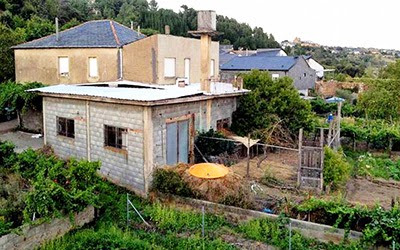
Example of “ugliness”: improvised houses. O Barco de Valdeorras, Rubén Vizcaíno en La Voz de Galicia (Galician Journal) - Attitudes of recycling are still on the consciousness of people, that do not worry on aesthetics, but rather on the functionality.
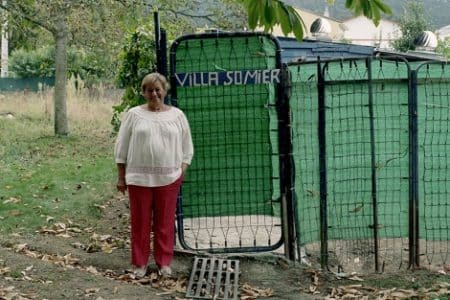
Example of “ugliness”: recycling in a village in Galicia. Fences made out of bed frames. Villa Somier, Covas, Viveiro. Source: Ergfosfera. - Houses are both productive and reproductive spaces. The image below shows a house where the ground floor is a garage for storing agricultural machinery while the up floors serves for residential purposes.
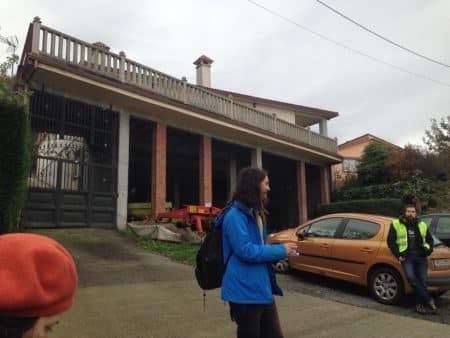
Example of “ugliness”: spaces of production and reproduction. Own picture made during the hike.
Thank you all, organisers and participants, for the amazing moments and insights!
